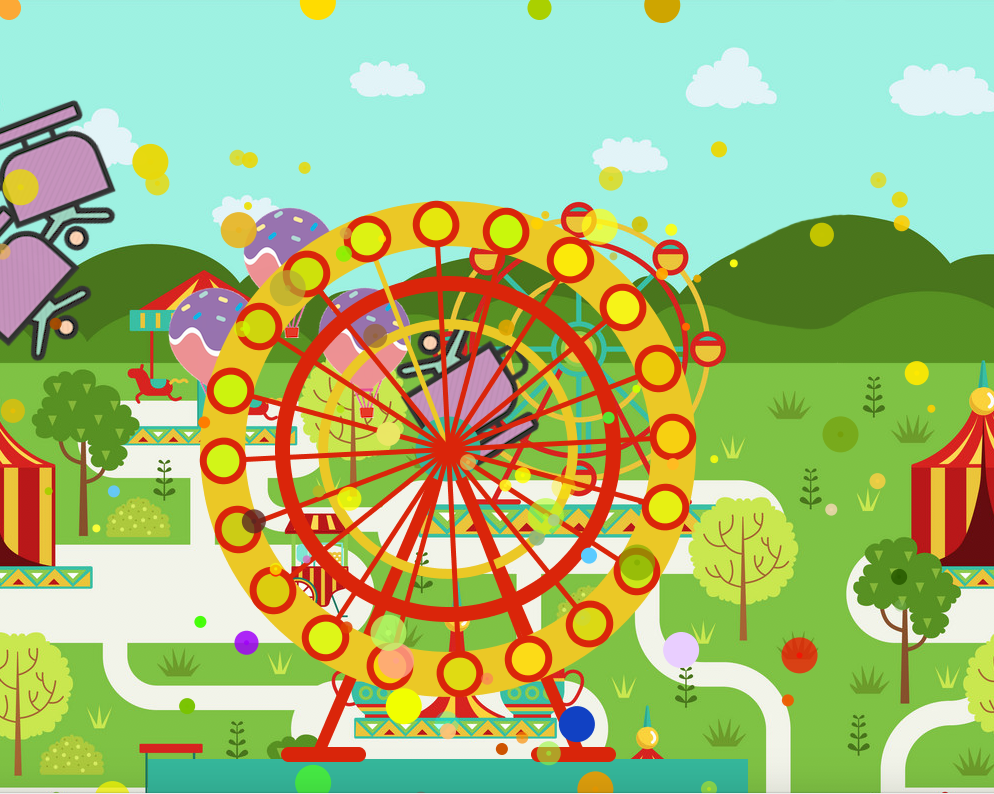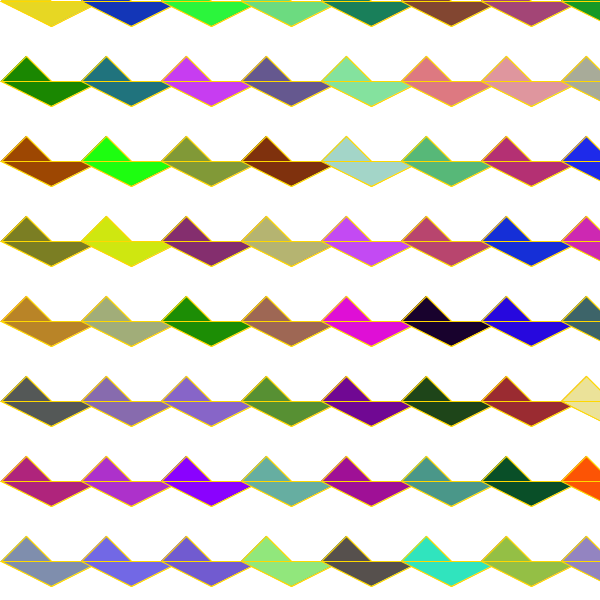Comparing to Vera Molnar’s mathematical computer art, George Nees has a similar form but a very different idea. He uses noise and randomness to create a pattern that doesn’t look like something straightly coming out of a math textbook. He likes to start with something like a grid which is more like a mathematical pattern and then building an orderless progression and let the computer deal with the computation. You can clearly see the progression from an ordered pattern to a random or an unorganized pattern.
With that in mind, I started to think about how to use randomness in my work if I have the same starting file and see how my randomness and George’s randomness have different effects on the same starting code.
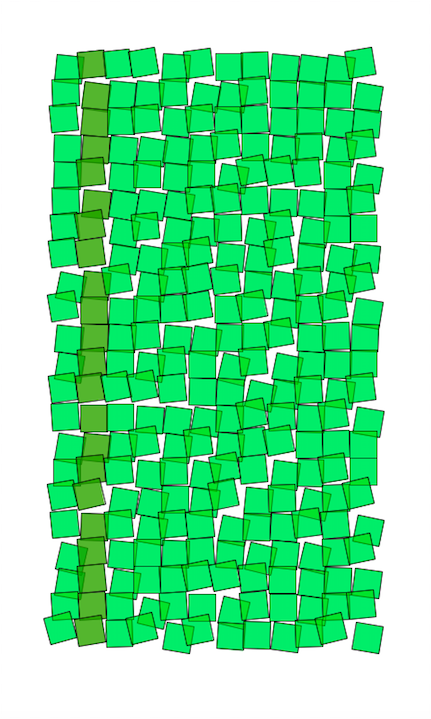
- For my first image, I played with random_sum and random_value and filled the rectangle with two different shades of green and loop through the darker one so every time I open the code, the darker green would be in different columns. When drawing the rectangles, I push and pop matrix and translate the coordinates using random_value so the rectangles would face a different direction even they’re in the same row and column. The randomness really creates a rather loose structure than the original code.
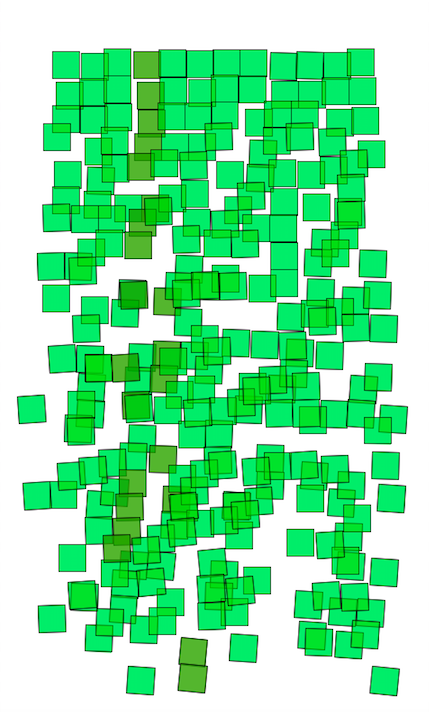
- For the second image, I again changed the randum_sum but keep the random_value the same because random_sum is a really interesting variable to play with. This time, I increased the dampening variable by 10. In this version, the rectangle would start denser but when the number of columns getting larger, it would be more spread out. Comparing to the first image, the second one I create has more randomness in it. And, the darken green strip would appear in a random row.
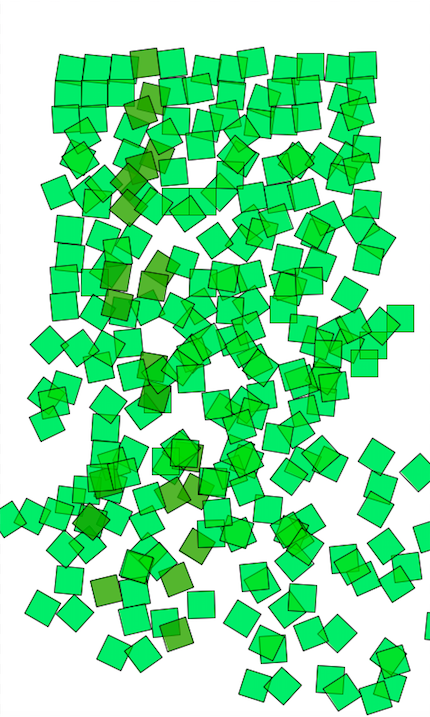
- In the last version, I decided to change the random_step by 10. This code has random_step and random_value scaled by 10, so it’s clear that when the number of columns increase, it would be even more spread out. Since I still kept the darker strip popping out randomly, it’s interesting to see how that specific column got translated and interact with other rows.
What I like about this assignment is that I can play with randomness and even though I have something in mind when I put it in code, it will look totally different from what I imaged, but I still like it and the images turn out to be very interesting to look when seeing all three of them together.

